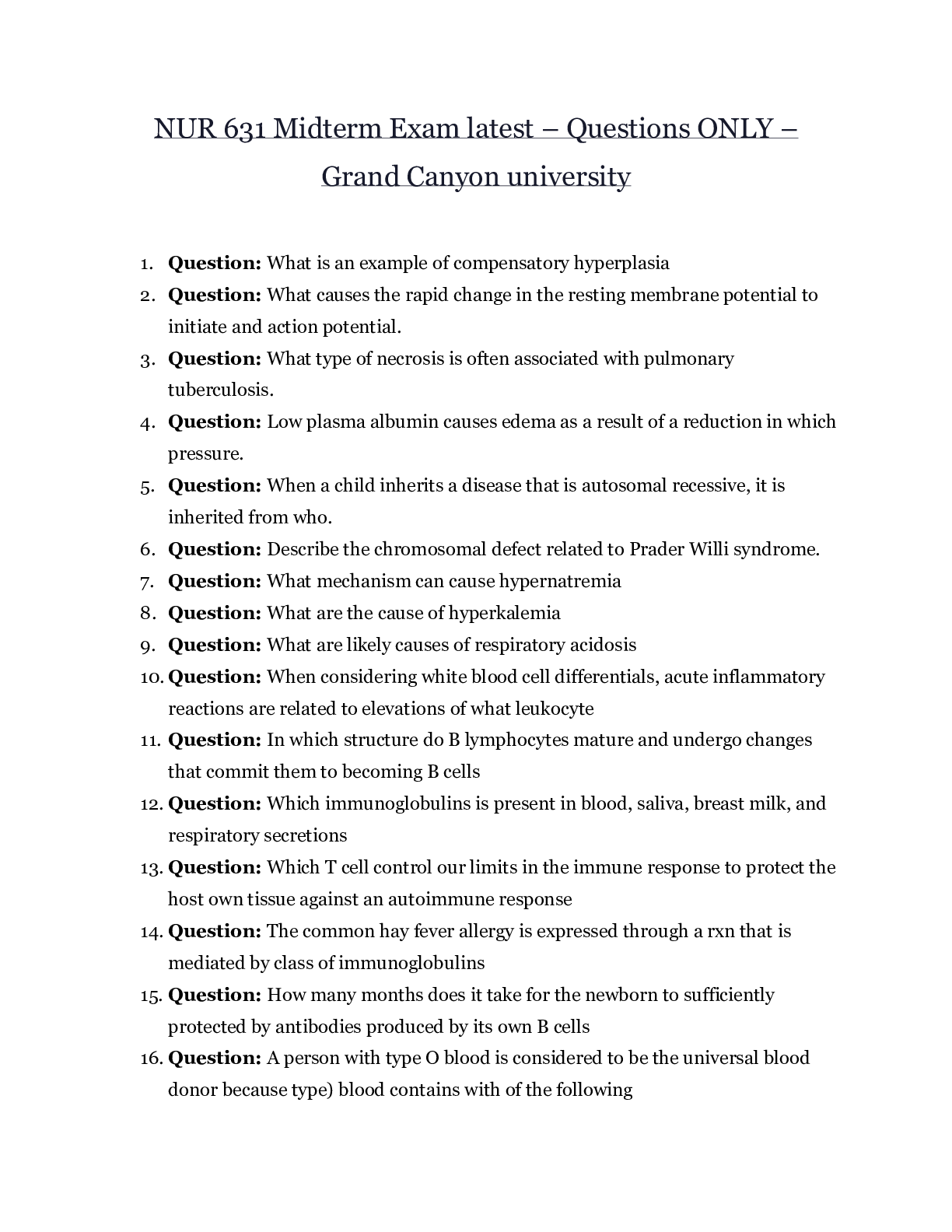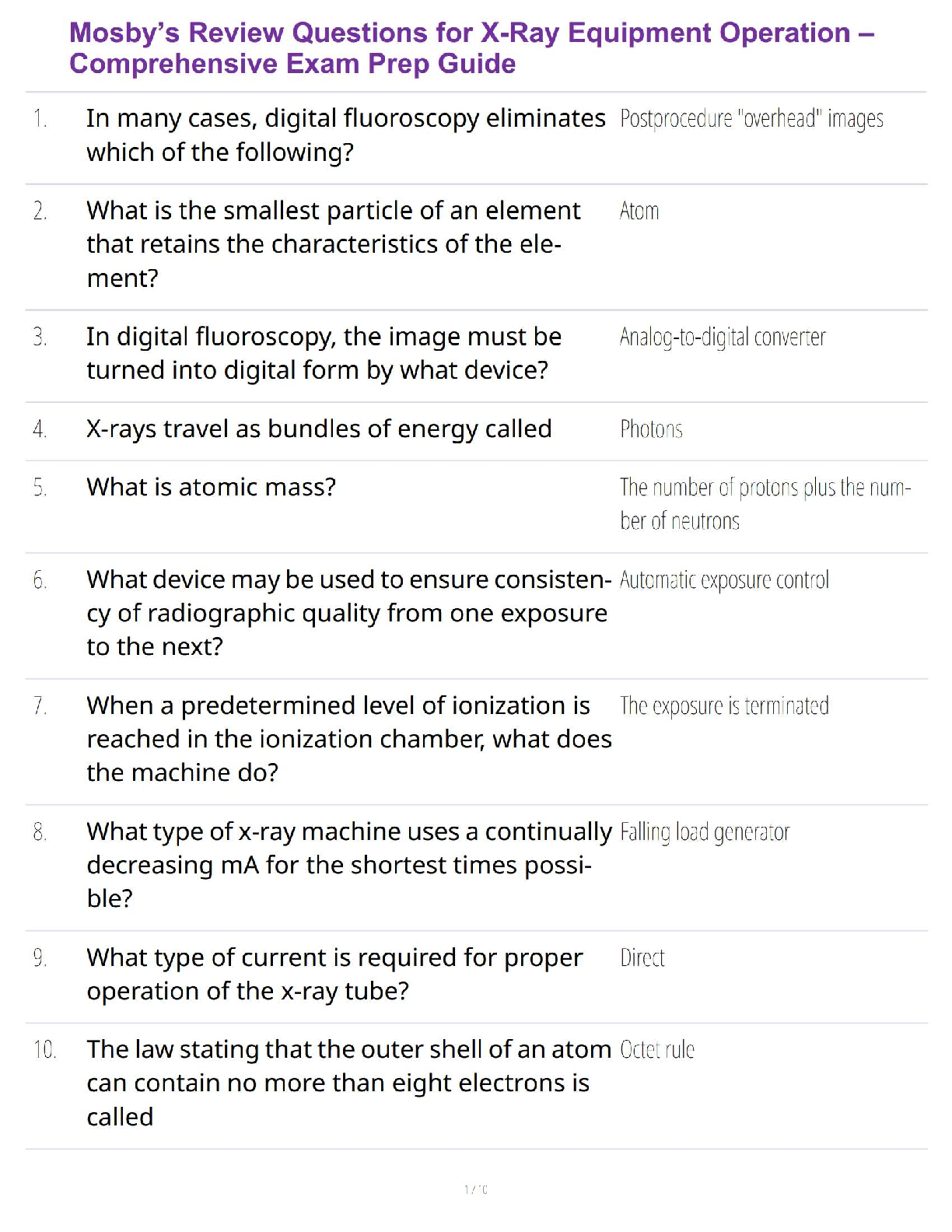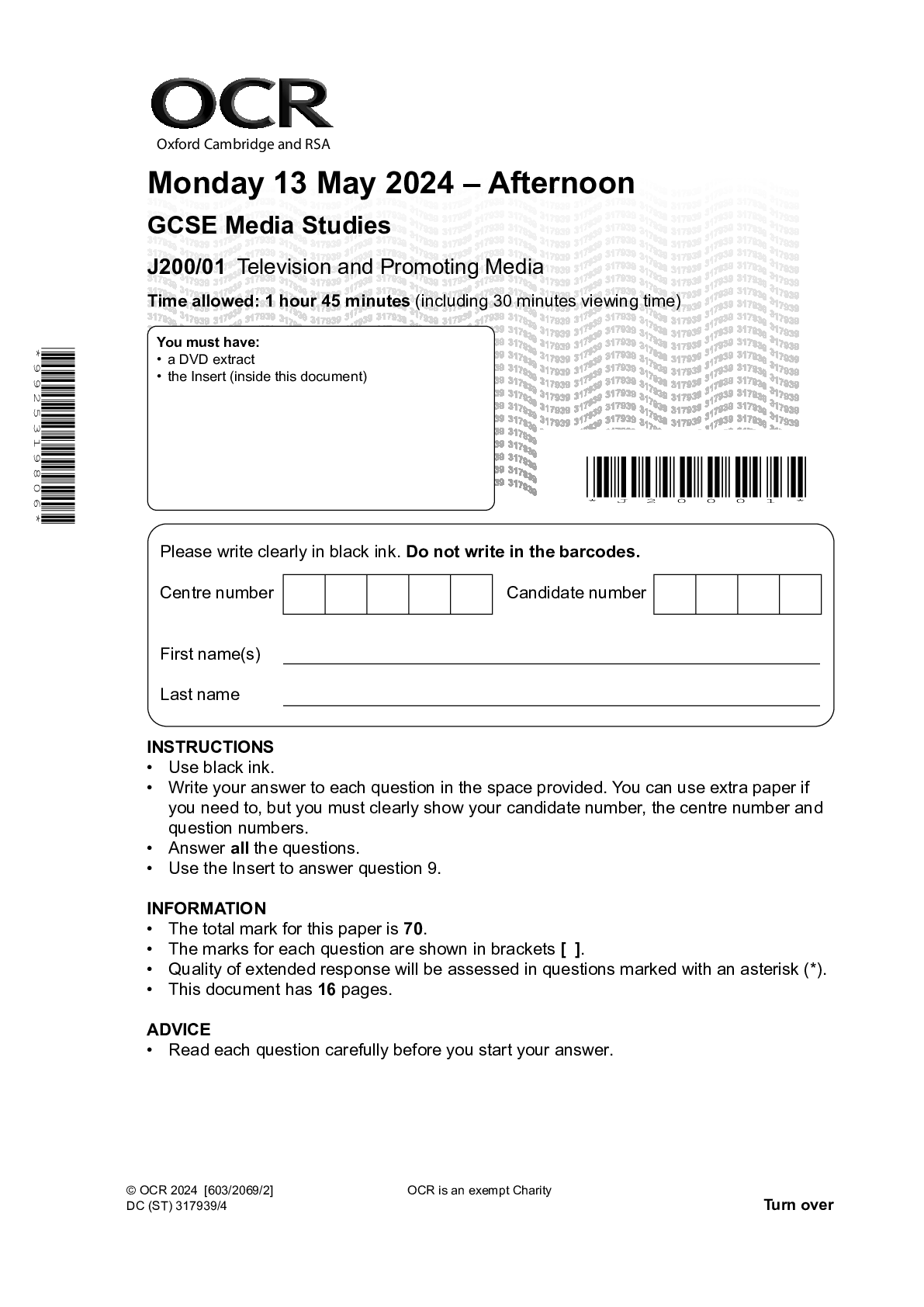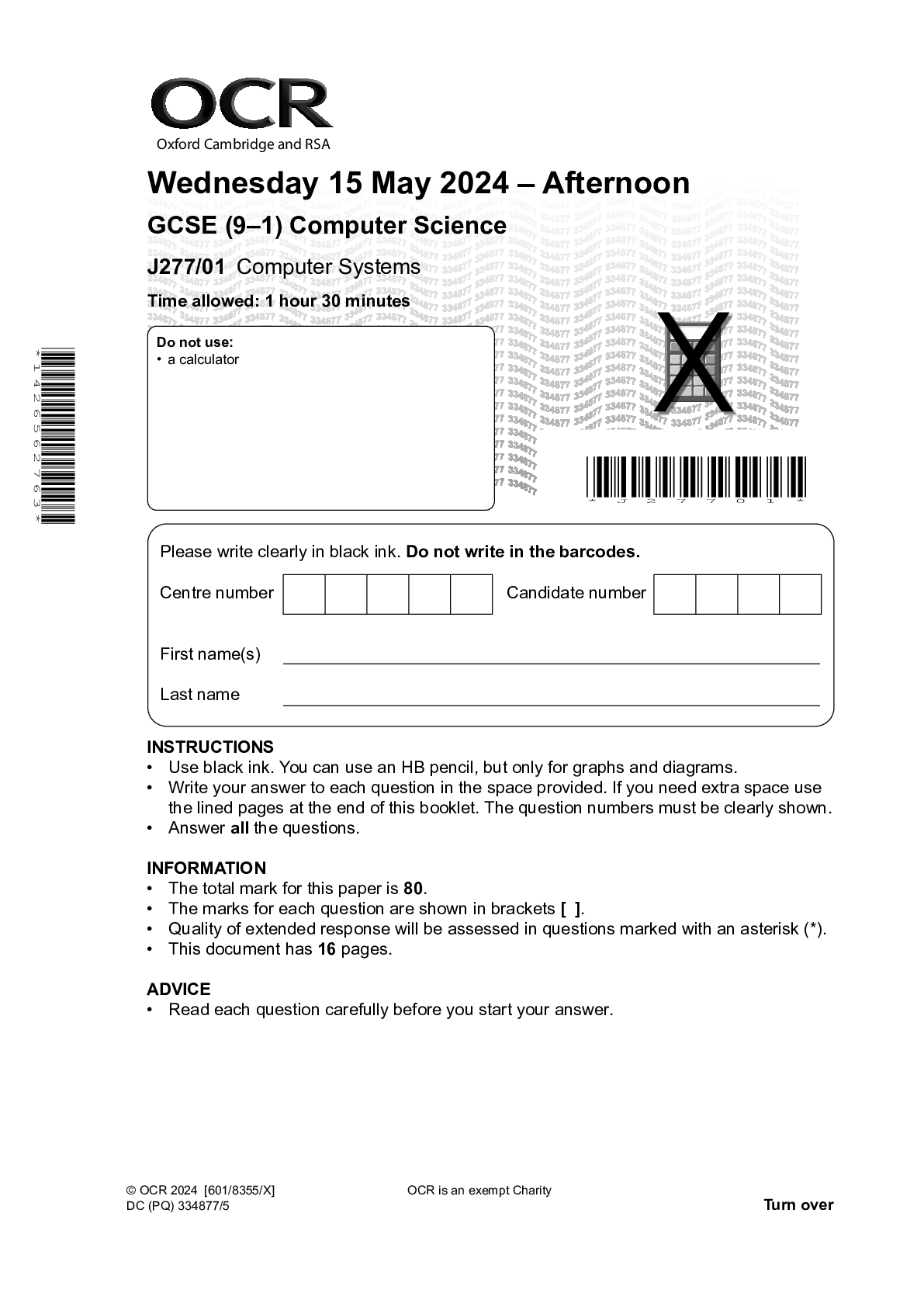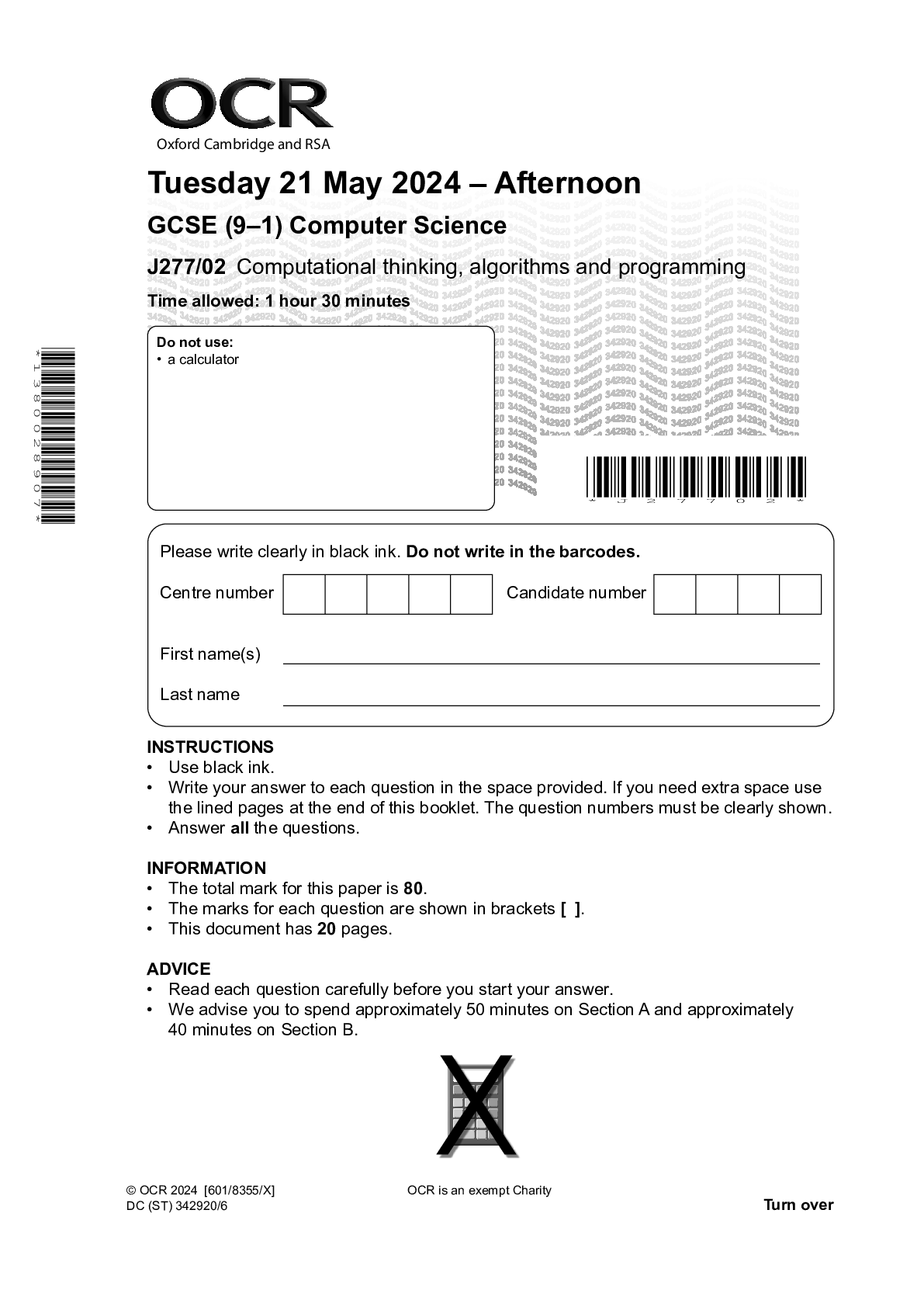Biology > QUESTION PAPER (QP) > NAPSRX Test questions 2019 – University of Phoenix | NAPSRX Test questions 2019 (All)
NAPSRX Test questions 2019 – University of Phoenix | NAPSRX Test questions 2019
Document Content and Description Below
NAPSRX Test questions 2019 – University of Phoenix 1.How are drugs sorted into therapeutic groups and classes? A. first by the conditions that they are used to treat, and then by their mecha ... nisms of action B. first by their mechanisms of action, and then by their therapeutic effects C. first by their side effects, and then by therapeutic effects D. first by their toxically, and then by their effectiveness 2.Bone marrow transplants… A. … require that the patient first undergo chemotherapy or radiation to kill the diseased stem cells and promote white blood cell production. B. … are a type of stem cell therapy, unless patient’s own cells are reinjected. C. … are always a type of stem cell therapy. D. … can help people with leukemia, a condition in which the body does not produce enough white blood cells. 3.What does AMA stand for? C. American Medical Association 4.What section of a drug’s package insert describes situations in which the drug should not be used because the risks outweigh the therapeutic benefits? B. contraindications 5.What is tertiary care? B. highly specialized medical and surgical care provided by a large medical center for unusual or complex medical problems 6.Which of the following is NOT one of the stages in the classic approach to brand development strategy covered in your manual? C. brand quality 7.What are vasodilators used to do? A. decrease vascular resistance and increase blood flow B. mimic pathogens to stimulate the immune system C. narrow the blood vessels D. stimulate the CNS to make the heart beat faster 8.What is the name of the condition that occurs after a specific dose of a drug is given at such regular intervals that absorption and elimination (and therefore drug plasma concentration) have become constant? A. homeostasis B. steady state C. titration D. tolerance 9.Which statement is TRUE about ocular administration? A. Ocular administration is primarily for drugs that must cross the blood-brain barrier. B. Ocular administration is used primarily to treat the eye.’ C. Ocular administration is used when a drug must enter the bloodstream immediately. D. Ocular administration is used when a drug must produce immediate effects on the brain or spinal cord. 10.Which entity/entities invest(s) the most money in pharmaceutical R&D? A. Canadian pharmaceutical companies B. the NIH C. the U.S. Government D. U.S. pharmaceutical companies 11.How are most drugs excreted? A. via the bloodstream B. via the heart C. via the kidneys D. via the skin 12.Over the last few decades, what has happened to legal limitations on sales’ reps discussions about off label uses? A. Limitations have decreased. B. Limitations have increased significantly. C. Limitations have increased slightly. D. Limitations have remained about the same. 13.According to your manual, which of the following is an example of a branding fundamental? A. the brand logo B. the brand name C. the brand packaging D. the brand promise 14.What does it mean if two drugs are at parity? A. Both drugs are essentially in a neutral position. - - - - - - - - - - - - - - - - - - - 140.Where are most drugs metabolized? A. interstitial spaces B. liver C. stomach D. the bloodstream 141.What is essential to the ethical requirement that subjects be selected fairly? A. Selection criteria should be well-supported by documented evidence. B. Studies should make every attempt to conduct research on subjects who are underprivileged and in need of medical attention. C. Subjects should be selected based on scientific objectives. D. all of these 142.Which of the following is the most appropriate salutation for a cover letter if you cannot find a contact name? A. Dear Personnel Department B. Dear Sir or Madam, C. Dear Sir, D. To Whom It May Concern, 143.What is part of becoming an indispensable pharmaceutical sales rep? A. asking for feedback B. giving the doctors anything they ask for to prescribe your products C. keeping your market share goals the same each term D. not bothering busy doctors in hospitals 144.Which of the following is NOT typically included in the indications and usage section of the package insert information? A. diseases or conditions that the drugs is approved to treat B. the drug’s active metabolites C. the drug’s recommended usual dosage D. the drug’s usual dosage range 145. Which term denotes the practice of classifying physicians and other potential prescribers by anticipated prescription volume? A. conditioning B. deciling C. detailing D. private labeling 146.What makes a drug eligible for fast track approval from the FDA? A. It is a generic that has already been approved as a branded drug. B. It is a new drug. C. It is less expensive than what is currently on the market. D. It treats patients with a serious, life-threatening condition. 147.In the gastrointestinal tract, help break up tablets to ensure full release of the active pharmaceutical ingredient. A. binders B. disintegrants C. dispersing agents D. lubricants 148. According to your manual, what does the PDRP do? A. It educates patients on their treatment options. B. It expands sales representatives’ access to patient information. C. It improves communication between sales representatives and patients in doctors’ offices. D. It limits sales representatives’ abilities to see individual physicians’ prescribing data. 149.What are the components of the centrals nervous system? A. the brain and sense organs B. the brain and spinal cord C. the brain, spinal cord, and peripheral nervous system D. the spinal cord and sense organs 150.Which term denotes the origin or cause of a medical condition? A. cytology B. discovery C. etiology D. pathology 151.Patients diagnosed with Type 1 diabetes … B. … have an autoimmune disease. 152.Which DTC pharmaceutical marketing tactic is permitted in European countries? A. disease state ads 153.What is one way in which psychologists DIFFER from psychiatrists? B. Psychologists deal more with emotional than physical issues. 154. What are PBMs? C. organizations that negotiate between pharmaceutical companies and large drug purchasers. 155.How does the Hatch-Waxman Act protect research-based drug manufacturers? C. by providing a 30-month cooling off period 156.What is the process of adjusting drug doses to achieve the maximum positive therapeutic effects while minimizing adverse or side effects? D. titration 157.Which of the following is studied more in pharmacodynamics than in pharmacokinetics? C. the transportation of the drug to the specific site for drug-receptor interaction 158.How does the healthy human immune system use MHC markers? D. Substances without MHC markers are discerned as foreign and targeted for destruction. 159.What is a behind-the-counter drug? A. Medication that must be closely monitored by the pharmacist. 160.When do MSLs meet with clinicians? A. at nearly any stage of the product’s life cycle [Show More]
Last updated: 3 years ago
Preview 1 out of 35 pages
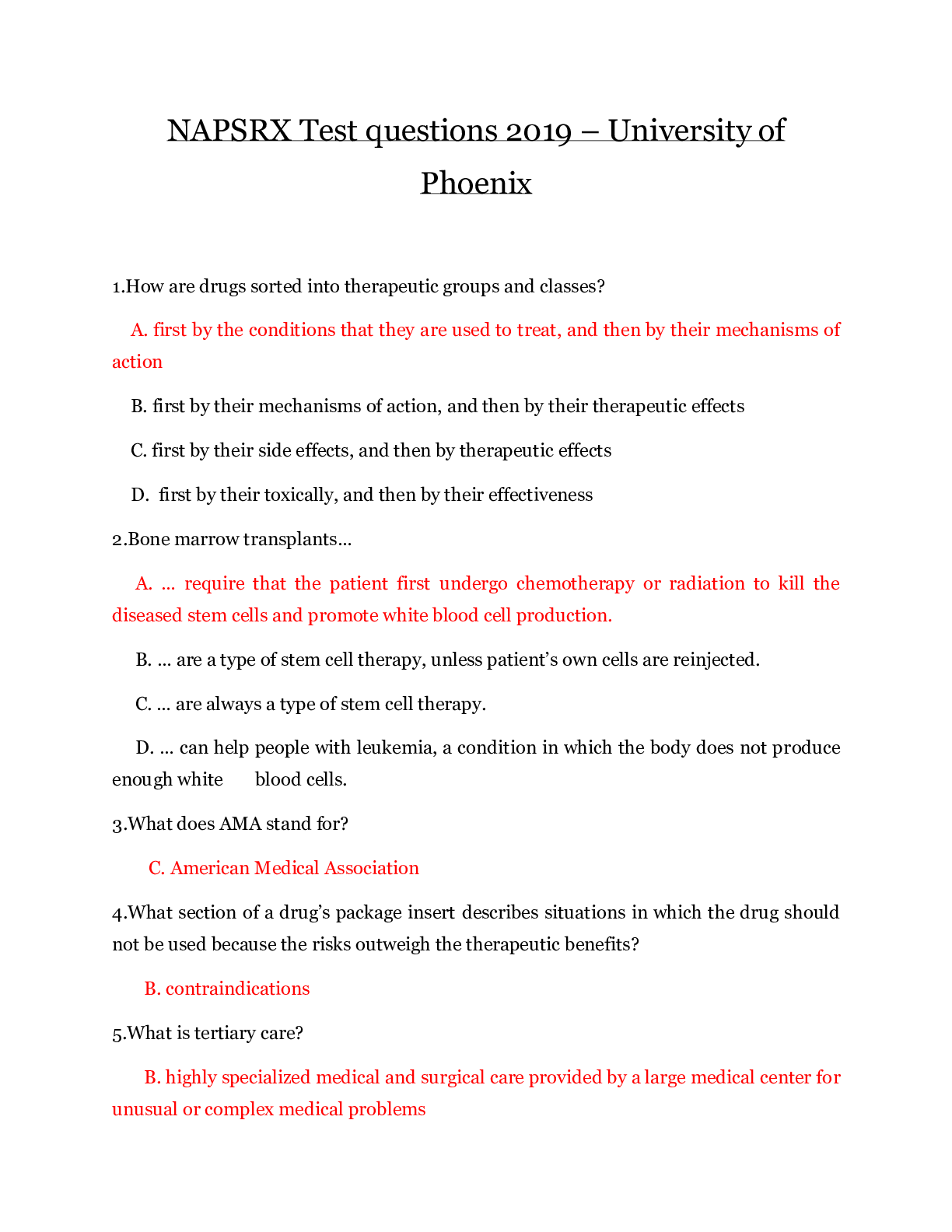
Buy this document to get the full access instantly
Instant Download Access after purchase
Buy NowInstant download
We Accept:

Reviews( 0 )
$10.00
Can't find what you want? Try our AI powered Search
Document information
Connected school, study & course
About the document
Uploaded On
Jun 25, 2020
Number of pages
35
Written in
All
Additional information
This document has been written for:
Uploaded
Jun 25, 2020
Downloads
0
Views
116


